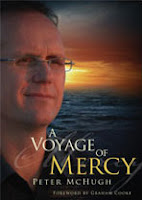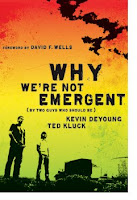Review: The Curious Incident of the Dog in the Night Time
 This book, The Curious Incident of the Dog in the Night Time, was one of my holiday readings. It was nice to read something light and “novelly” for a change, although this was not an idle pick-up-from-the-newsagent read. I was reading it for a reason.
This book, The Curious Incident of the Dog in the Night Time, was one of my holiday readings. It was nice to read something light and “novelly” for a change, although this was not an idle pick-up-from-the-newsagent read. I was reading it for a reason.
The main (first-person) character in the book, Christopher, has high-functioning autism. It is the insight into this character that is the heart and soul of this book. The plot and everything else serves this end of helping us get inside the autistic mind.
It is this aspect that intrigued me because our son, Samuel, has recently been diagnosed with very mild form of Aspergers Syndrome. Samuel is perfectly able to operate in normal social situations such as school and is a “normal” kid who occasionally needs help as he processes emotions and social situations. The Christopher character has a severe form which completely incapacitates his social and emotional ability. These extremes of Christopher help give insight into the subtleties of others.
The book is written as Christopher’s diary, written, we are told by Christopher, at the urging of one of his teachers at the special school he attends to help him deal with and process the fact that a neighbours dog has been killed. Christopher decides to follow his hero Sherlock Holmes (the title is a Conan Doyle quote) in being a detective to discover why Wellington (the dog) was killed.
In the process he stumbles across truths about his family life that causes him to do the unthinkable and venture out alone on a journey to find a loved one. It is here that Haddon’s skill of getting us into Christopher’s head comes to the fore. Here he describes the situation in a train station:
“And then I was at the bottom of the escalators and I had to jump off and I tripped and bumped into someone and they said ‘Easy,’ and there were two ways to go and one said Northbound and I went that way because Willesden was on the top half of the map and the top is always north on maps.
And then I was in another train station but it was tiny and it was in a tunnel and there was only one track and the walls were curved and they were covered in big adverts and they said WAY OUT and London’s Transport Museum and Take time out to regret your career choice and JAMAICA and British Rail and No Smoking and Be Moved and Be Moved and Be Moved and For Stations beyond Queen’s Park take the first train and change Queen’s Park if necessary and Hammersmith and City Line and You’re closer than my family every gets. And there were lots of people standing in the little station and it was underground so there weren’t any windows and I didn’t like that, so I found a seat which was a bench and I sat at the end of the bench…
And then there was a sound like people fighting with swords and I could feel a strong wind and roaring started and I closed my eyes and roaring got louder and I groaned really loudly but I couldn’t block it out of my ears and I thought the little station was going to collapse or there was a big fire somewhere and I was going to die. And then the roaring turned into a clattering and a squealing and it got slowly quieter and then it stopped and I kept my eyes closed because I felt safer not seeing what was happening…” (Pages 215-216)
Haddon uses devices such as Christopher’s interest with mathematics (the chapters are the sequence of prime numbers) and maps and algorithms. He demonstrates how the completely non-intuitive Christopher interacts with a world that demands intuition. The ending of the book, with an appendix that is Christopher’s full answer of a mathematical proof from his highly-valued A-Level exam, is cause for a wistful smile at a way of saying goodbye to the character to which you have been so closely attached for the whole story.
There is genius in how this book is written. That alone makes it worth the read.














